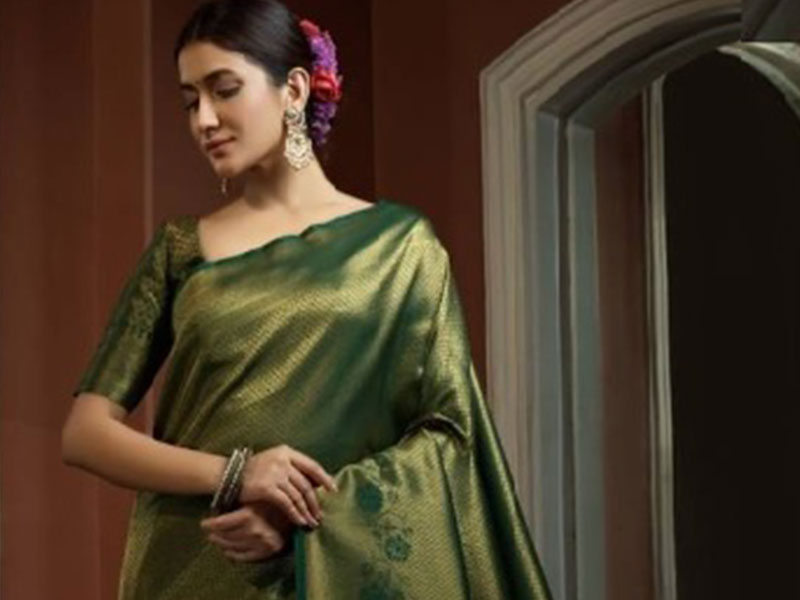he story of Kanjivaram sarees traces back to Hindu mythology. Legend has it that the weavers of these exquisite silk sarees are the descendants of Sage Markanda, the revered master weaver of the gods.
Centuries ago, these skilled artisans settled in the quaint town of Kanchipuram, nestled in the southern state of Tamil Nadu, India. Here, they continued the legacy of weaving silk, just as their ancestors had done.
Kanchipuram: The Birthplace:
- The name “Kanjivaram” itself reveals its origin. These sarees hail from Kanchipuram, a town renowned for its rich textile heritage.
- Kanchipuram sarees are also known by other names, including Kanjeevaram sarees and Kanchi Cotton Sarees. However, it is the luxurious Kanchipuram Silk Saree that steals the spotlight.
Gold and Silver Magic:
When you admire a Kanjivaram saree, you’ll notice its hallmark: the touch of gold and silver across its borders.
The intricate zari work, also known as the border, contains approximately 0.6% gold and 57% silver. This precious metal infusion adds to the saree’s allure.
The Kanjivaram saree proudly bears the Geographical Indication (GI) tag, signifying its Indian origin and authenticity.
Historical Threads:
Historical records reveal that during the reign of Chola King Krishna Deva Raya (985–1015 CE), silk trading flourished in Kanchipuram.
The city welcomed weaving experts—the Devangas and the Saligars—who played a pivotal role in boosting silk trade.
Today, Kanjivaram sarees are an integral part of South Indian weddings, adorning brides on their most significant occasions.
The Making of Kanjivaram Sarees:
- Unlike other silk sarees, Kanjivaram sarees use pure silk made from Mulberry.
- The yarns undergo a unique process: they are dipped in rice water and sun-dried, resulting in thicker, stiffer threads.
- These threads are then intertwined with silver wire and further interlocked with gold thread.
- The hand-weaving process begins, creating a fabric that is both strong and durable.
- Each Kanjivaram saree weighs approximately 2 kilograms due to the real gold and silver content, making it a prized possession.
Legacy and Adaptations:
- While the authentic Kanjivaram sarees remain a symbol of pride, lighter versions are crafted using synthetic yarn to make them more accessible.
- On special occasions, weavers create ornate pallus and borders with specific themes, seamlessly attaching them to the main saree.
- In summary, wearing a Kanjivaram Silk Saree with its shimmering gold border is not just a fashion choice—it’s a celebration of heritage, craftsmanship, and timeless elegance.







